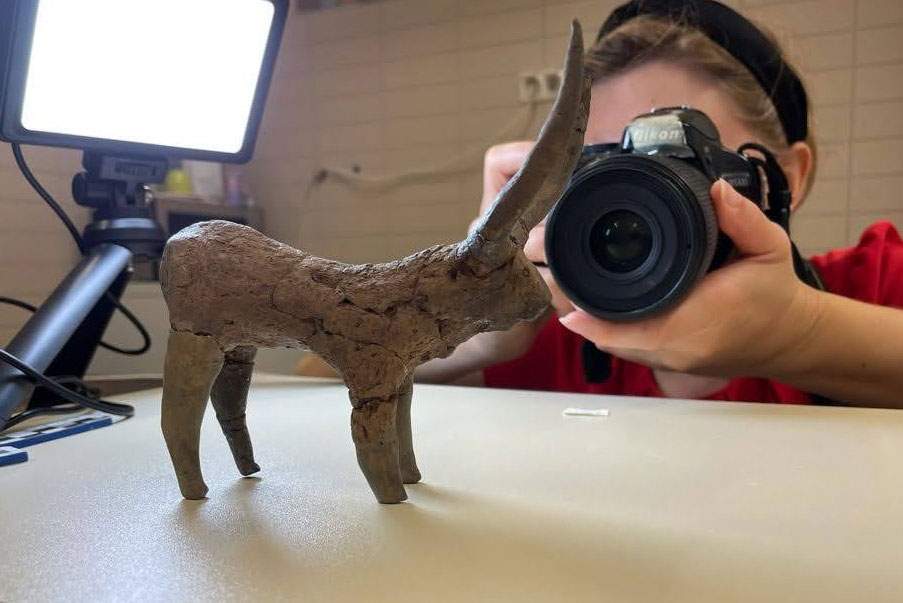A research team from theUniversity of Pisa’s Department of Civilization and Forms of Knowledge is working on a project involving a number of prestigious European museums, including Rijksmuseum van Oudheden in Leiden, Musée Art & Histoire in Brussels, Ägyptische Museum Georg Steindorff in Leipzig, and the Louvre in Paris, to study Egyptian and Nubian mud and unbaked clay figurines. The team identified processing traces and fingerprints of the makers of the figurines themselves, part of the material culture of ancient Egypt.
The study was carried out as part of the research project PROCESS - Pharaonic Rescission: Objects as Crucibles of ancient Egyptian Societies, directed by Professor Gianluca Miniaci, who, together with Vanessa Forte and Camilla Saler, studied groups of mud or unfired clay figurines dating to the Middle Bronze Age in Egypt (2000-1500 B.C.) and from different Egyptian and Nubian archaeological contexts.
“These small figurines depict multiple subjects (humans, animals, enemies to curse, propitiatory female figures), but they are all united by the poor material from which they are made, mud and clay from the Nile, a material considered poor,” Professor Miniaci explains. “If, in fact, the public is usually fascinated by the ’treasures’ of ancient Egypt, jewelry of gold, silver, inlaid with lapis lazuli and ivory, alabaster and granite statues, sarcophagi of the precious cedar wood, the mud holds within it other hidden treasures, which the archaeologist has the task of bringing to light.”
Traces of workmanship, use, and fingerprints of the people who had forged and used these figurines have been identified thanks to a portable Dinolite microscope and 3D photogrammetric modeling. "Thanks to the PROCESS project we are recovering those almost invisible marks that instead shed light on the very identity of the lesser-known people of ancient Egypt, such as artisans and villagers, common individuals too often ignored by the history of major events,“ Miniaci added. ”Moreover, the study of these figurines is revealing fundamental information about the beliefs, behaviors and expectations of the common inhabitants of ancient Egypt, which are often obscured by the solemn professed doctrines of the pharaohs and high officials."
 |
| Archaeologists have discovered fingerprints on mud figurines from ancient Egypt |
Warning: the translation into English of the original Italian article was created using automatic tools. We undertake to review all articles, but we do not guarantee the total absence of inaccuracies in the translation due to the program. You can find the original by clicking on the ITA button. If you find any mistake,please contact us.